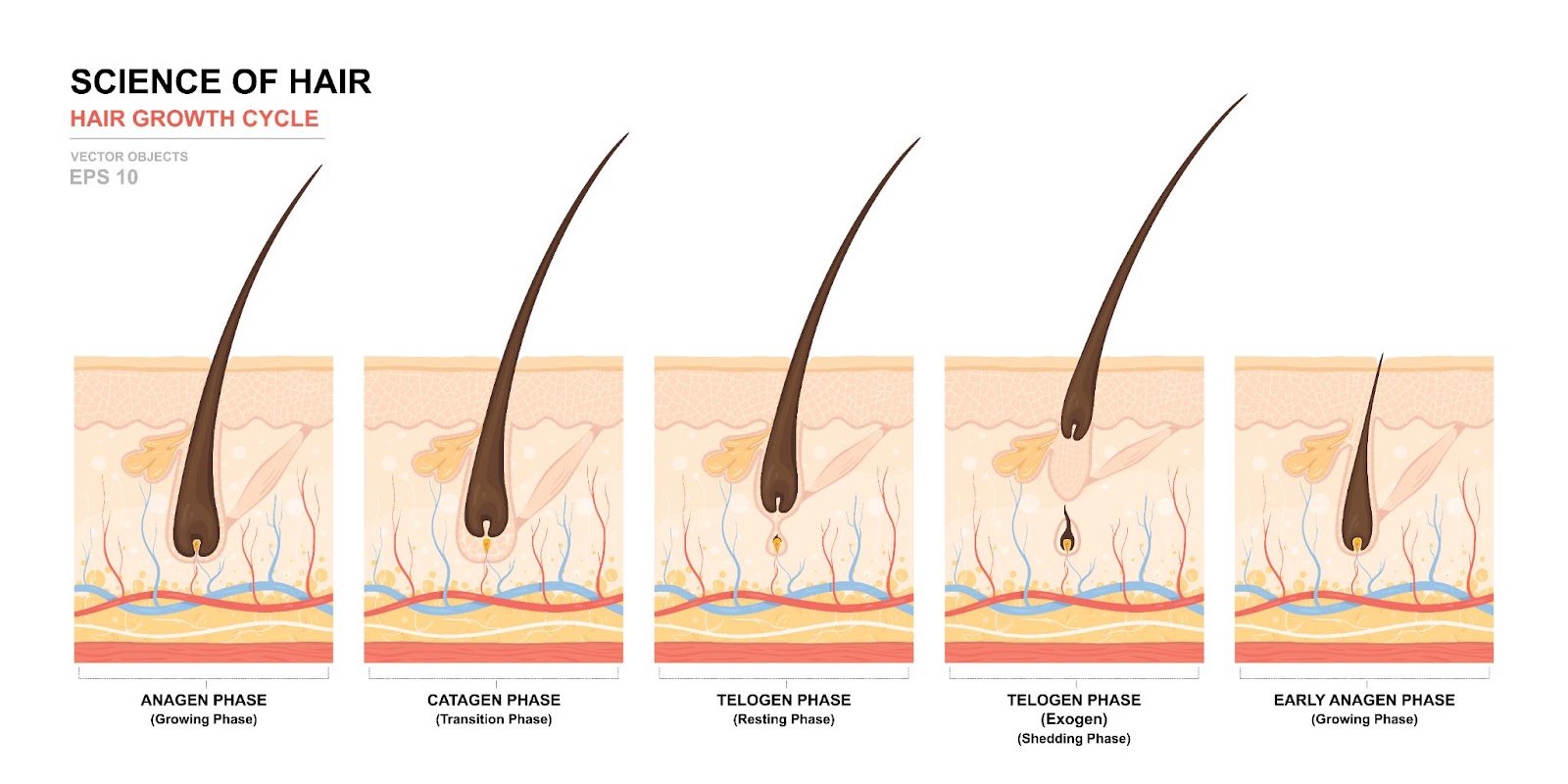Dr Rachel Lim: Is Permanent Laser Hair Removal Truly Permanent? Here’s what the advertisements don’t say

Hair removal is easily one of the most popular procedures in the realm of aesthetics. It is the 3rd most common [1] non-surgical cosmetic procedure worldwide. Many individuals are drawn to the plethora of permanent hair removal advertisements without knowing that the promise of permanence comes with a caveat. In this article, I explain the realities of laser hair removal in Singapore, helping readers make informed decisions for smooth, hair-free skin.

What is laser hair removal, and how does it work?
Laser hair removal, not to be confused with Intense Pulsed Light therapy (IPL), is a medically approved procedure [2] for removing unwanted hair on various parts of the body, such as the armpits, face, legs, arms, and bikini area. It works by targeting and damaging hair follicles, hindering their ability to grow.
During the procedure, medical-grade laser devices emit a concentrated beam of light or laser in the form of photons. These photos are absorbed by melanin – the pigment responsible for giving our skin and hair colour. Laser hair removal works via a process known as selective photothermolysis [3]. This means that the laser or photons are selectively absorbed by dark melanin, thereby preserving the lighter surrounding skin. When absorbed, the light energy converts to heat, destroying the hair follicles and preventing, slowing, or reducing hair growth.

Can hair be permanently removed by laser?
Laser hair removal effectively reduces hair growth, with patients experiencing approximately 50-70% reduction of hair [4]. This effectiveness depends on three main factors: hair growth cycle, skin and hair colour, and hormones.
Hair growth cycle
Our hair goes through a cyclical process where hair continuously grows and sheds. This process is broken down into four phases:
- Anagen phase: the anagen phase [5], also known as the growth phase, is the cycle’s longest and most active phase. It can last between two to six years and depends on various factors such as age, genetics, and general health. During this phase, stem cells at the base of the hair follicle rapidly divide, pushing the hair shaft outwards, resulting in hair growth.
- Catagen phase: the catagen phase, also known as the transition phase, lasts approximately two to three weeks. Hair growth is reduced significantly as the hair follicle detaches from the blood supply, depriving itself of nutrients for growth and resulting in club hair [6].
- Telogen phase: the telogen phase [7], also known as the resting phase, lasts about two to four months. Since it has detached from the blood supply, the hair follicle is completely inactive, and no growth occurs.
- Exogen phase: the exogen phase [8], also known as the shedding phase, is when the hair naturally sheds or falls from the scalp. It can last several weeks and typically overlaps with the tail-end of the telogen phase. Hair is shed from the scalp when the anagen phase for the new hair bulb begins, thus restarting the hair growth cycle.

Laser hair removal is the most effective on hair in the anagen phase [9] when hair is actively growing, and the follicle is firmly attached to the root. However, laser hair removal is the least effective on hair in the catagen, telogen, or exogen phase. In these phases, hair is not actively growing; the follicle is inactive and detached from the hair bulb, so the laser cannot effectively target the stem cells directly responsible for producing new hair.
Skin and hair colour
Lasers for hair removal are designed to work by targeting melanin through a process called selective photothermolysis [3]. This means it explicitly targets darker hair with more melanin, leaving the lighter surrounding skin untouched. Hence, laser hair removal is more effective in individuals with darker hair and lighter skin tone combinations. The impact of skin tone and hair colour are as follows:
- Lighter skin tones: individuals with lighter skin tones tend to have a higher contrast between their hair colour (darker) and skin (lighter). This allows the laser to focus its energy more precisely on the hair follicle without significantly affecting the surrounding skin. Clinically significant hair reduction is observed in lighter skin tone individuals who have undergone laser hair removal [10].
- Darker skin tones: conventional lasers for hair removal often struggle with distinguishing between the pigments in the skin and hair, especially on darker skin tones [11]. This lack of sophistication can lead to a higher risk of damaging the surrounding skin, causing burns or discolouration. However, advancements in laser technology, such as the Fotona laser, have significantly improved precision and safety. These modern lasers can more accurately target hair follicles without affecting the surrounding skin, making them a safer and more effective option for individuals with darker skin tones.

Hormones
The last factor that plays a significant role in the effectiveness of laser hair removal is hormones. Hormones have the following effect:
- Impact on hair growth cycles: hormonal fluctuations can affect the synchronisation of hair follicles and the duration of the anagen phase, making it more challenging to target all follicles in their most vulnerable growth stage during laser treatment.
- Stimulating hair growth: certain hormones, such as androgen, prolactin, and progesterone, stimulate hair growth [12]. These hormone fluctuations typically occur in women with Polycystic Ovary Syndrome (PCOS), pregnant women, and menopausal women.
So, to answer the burning question, is laser hair removal permanent? Yes, it CAN be permanent when performed with expertise, offering a highly effective and long-lasting solution for significant hair reduction.
At Cove Aesthetic Clinic, we believe a synergistic approach is key to permanent hair removal. Our methods incorporate an in-depth understanding of the factors that affect hair growth, bespoke multimodal treatment plans, and accurate laser selection and customisation.
Which laser is recommended for permanent hair removal?
One thing advertisements don’t tell you is that not all lasers are created equal. Different lasers have different wavelengths and different principles of operation. I have seen many lasers come and go, but the one that stands out for permanent hair reduction is the Fotona laser.
The Fotona Laser ensures permanent hair reduction; it comprises the Nd:YAG laser with a three-dimensional treatment pattern using FRAC3 technology. The Fotona Laser incorporates pulse-control technology and combines selective homogenous photothermolysis, ensuring effective and long-lasting hair reduction. Let’s take a look at how it works:
- Nd:YAG laser: the Nd:YAG laser emits at the longest wavelength, 1064 nm, and is ideal for all skin tones [13]. Its long wavelength penetrates deeper and bypasses the melanin in the skin, making it safe and effective. Compared to lasers in the past with short wavelengths (making them inappropriate for darker skin tones), the Fotona laser’s long wavelengths and pulse-control technology are the perfect match for laser hair removal in all skin tones.
- FRAC3 technology: the FRAC3 technology targets microscopic zones within the skin, creating a three-dimensional treatment pattern. This fractional approach allows for precise treatment while leaving surrounding tissue unharmed, promoting faster healing and reducing downtime.

Proper laser wavelength selection coupled with pulse duration and fluence or energy density is pivotal in ensuring safe and effective hair removal [14]. Pulse duration, or pulse width, is the time a laser targets an area and must align with the thermal relaxation time (TRT), which is the cooling time for hair follicles [16]. If the pulse duration is too short (under 10 ms), it won’t heat the follicle enough, making the treatment ineffective. If it is too long (over 100 ms), it may cause burns. Additionally, the fluence must be high enough to damage the follicle without burning the skin, which is especially important for dark skin tones and dense hair areas, where lower fluence can prevent irreversible thermal damage.
The delicate balance of these factors emphasises the importance of selecting an experienced and proficient doctor for your laser hair removal needs. With my years of experience, I bring a wealth of medical knowledge and proficiency to the table. I prioritise safety and treatment personalisation to ensure effective hair removal while minimising risks for all my patients. While some clinics might offer laser hair removal with technicians, Cove Aesthetic Clinic offers a doctor’s expertise that significantly enhances the safety and effectiveness of the entire process.
But what about IPL for hair removal?
Intense Pulsed Light, or IPL, is not technically a type of laser. Although both IPL and lasers use light energy to target hair follicles, they operate differently:
- IPL: IPL emits a broad spectrum of light wavelengths rather than a single focused wavelength like lasers do. This makes IPL less specific in targeting melanin in hair follicles, potentially affecting surrounding skin more than lasers explicitly designed for hair removal.
- Lasers: hair removal lasers, on the other hand, emit a single wavelength of light, typically in a coherent beam, which can be more precisely tuned to target melanin in hair follicles while minimising damage to surrounding tissue.
Therefore, while IPL can be used for hair reduction, it is not considered a type of laser for hair removal. Furthermore, lasers can only be performed by MOH-certified doctors, while IPL and other types of hair removal, such as SHR, do not require a qualified doctor to be used.
What the advertisements don’t say about laser hair removal
Although tempting, remember that advertisements are meant to draw you in. There are many hidden things that don’t actually make it on the billboard. Here’s what the advertisements don’t tell you about laser hair removal:
- Multiple sessions are required: advertisements often omit the fact that laser hair removal requires multiple sessions. Typically, patients require 6-8 treatments spaced 4-6 weeks apart to achieve optimal results.
- Potential for regrowth: while laser hair removal significantly reduces hair growth, some hair may eventually regrow. This regrowth is usually finer and lighter but varies from person to person.
- Skin sensitivity and side effects: laser hair removal is generally safe, but it can cause temporary side effects, including redness, swelling, and discomfort. In rare cases, patients may experience burns, blisters, or changes in skin pigmentation. This highlights the importance of laser wavelength, pulse duration, and doctor experience.
- Varying levels of responsiveness: not all hair and skin types respond equally to laser hair removal. Patients with light-coloured hair may not achieve the same level of effectiveness as those with darker hair. Similarly, individuals with darker skin tones require specialised lasers to avoid skin damage and achieve effective results.
- Sun exposure and skin care: post-treatment care is crucial for optimal results and safety. Individuals must avoid sun exposure before and after treatment to reduce the risk of complications. Additionally, following my skincare recommendations is essential to ensure proper healing and maintenance of results.
What you need to know before your laser hair removal at Cove Aesthetic Clinic

Here are some advice I usually give my patients before they come in for a laser hair removal appointment:
- Avoid UV-ray exposure: minimise UV-ray exposure for at least four weeks before treatment.
- Do not wax or pluck the treatment area: avoid waxing or plucking, as these remove the hair follicle that the laser targets. I encourage my patients to shave the treatment area 2-3 days before the procedure to ensure an appropriate hair length. This allows for a safer and more effective laser hair removal session.
- Avoid specific skincare products: for a few days before treatment, refrain from using products that can irritate the skin, such as retinoids and alpha hydroxy acids.
- Discuss medications: inform me about any medications or supplements you are taking, as some may increase skin sensitivity.
Aftercare is essential for ensuring the best possible outcomes and minimising side effects. I recommend the following post-treatment care tips:
- Avoid UV-ray exposure: protect the treated area from UV-ray exposure and use broad-spectrum sunscreen daily. This applies to all areas of the skin (even untreated areas).
- Manage discomfort: apply cold compresses to alleviate any redness or swelling. If needed, take over-the-counter pain relievers.
- Follow skin care guidelines: use gentle, non-irritating products and avoid scrubbing or exfoliating the treated area for a few days.
- Stay hydrated: drink plenty of water to support skin health and healing.
Laser hair removal CAN be permanent.
When performed by a qualified doctor, laser hair removal can be permanent. However, individuals should approach the treatment with realistic expectations and a clear understanding of the factors that contribute to its effectiveness. By debunking the myths and providing accurate information, I hope you are well-informed and can make educated decisions about your hair removal options.
Do you find yourself trying hair removal methods that don’t work? If so, speak to us today.

